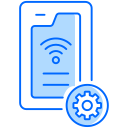UX Patterns for Trustworthy Control
Show last-known state, desired state, and synchronization status distinctly. Provide spinners with real meaning, not endless circles. When telemetry confirms a change, celebrate subtly. When it fails, explain next steps and offer a safe retry option.
UX Patterns for Trustworthy Control
Guide users through permissions, radios, and network credentials with bite-sized steps. Detect common pitfalls, like 5 GHz versus 2.4 GHz Wi‑Fi, before frustration sets in. Offer a quick diagnostic and save partial progress so restarting never feels punishing.
UX Patterns for Trustworthy Control
Commands may take seconds across radios, gateways, and clouds. Communicate expected timing and allow users to continue browsing. If a command lingers, notify politely and log the outcome later, avoiding frozen screens or ambiguous device states.





